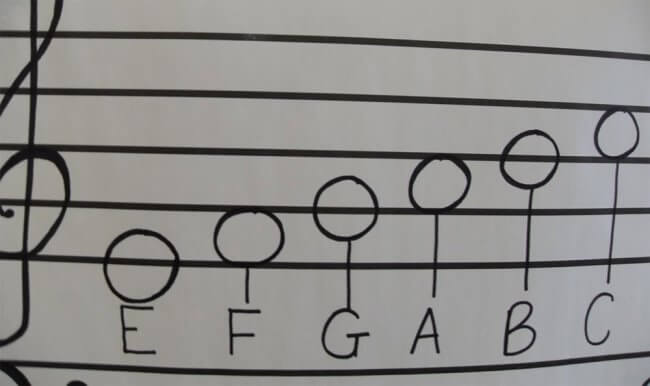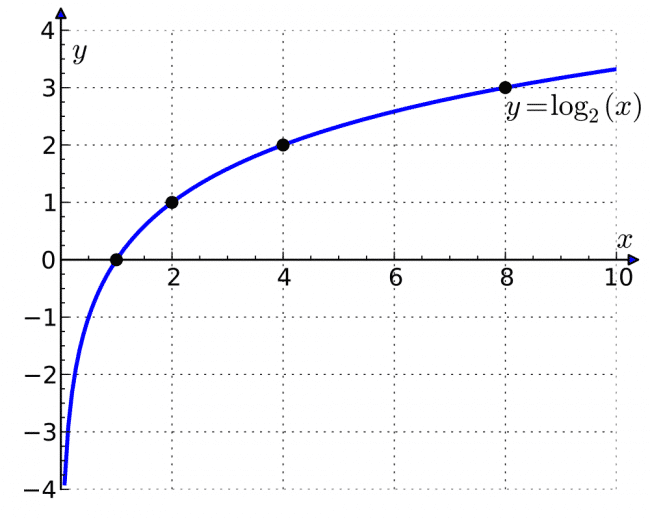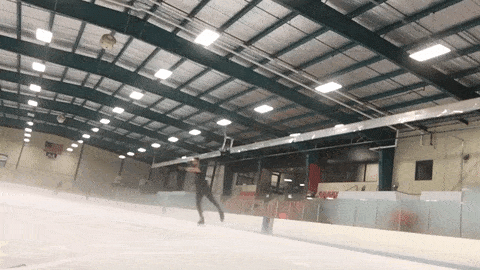I’ll never forget the first time I tried to teach myself a new skill.
I was in 7th grade, and after spending a lot of time fooling around with the free 3D graphics program Blender, I decided I should probably learn how to draw. That was the advice most 3D animators and artists gave, at least.
And so, without much of a plan in mind, I picked up a few books and drawing and started going through their exercises.
How did it turn out? Well, I certainly learned a lot about drawing. I even got to the point where I could do something more than stick figures, but the results of my quest were ultimately…meh.
Frustrated by my lack of substantive progress, I gradually lost interest in drawing, and now it’s something I rarely do outside of a few doodles in the margins of notebooks.
Looking back on my quest to “learn how to draw,” I can see that I lacked an understanding of how to acquire skills. I was always looking for the “perfect course” or “secret book” that would somehow catapult me to the stage of mastery. Now, I realize that the path to mastering any skill is far from so straightforward.
Luckily, I’ve since learned a lot more about what techniques do work for learning new skills, and I’ve successfully put them into practice in a few different areas, including language learning, website creation, and freelance writing.
So that you don’t flounder in your attempts to learn a new skill, we have today’s article. We’re going to cover the essential things you need to know to stop wishing you could do something and start taking the necessary action to learning how to do it.
Whether you need to learn a new skill for your major, your (current or future) job, or just for the fun of it, this article is for you. Come along as we break down everything you need to know about how to acquire a new skill.
The 3-Stage Model of Skill Acquisition and Mastery
Before you jump into learning something new, it’s important to understand how exactly skill acquisition works. Specifically, you should know that when learning any new skill (from coding to painting to dancing), there are three broad stages you’ll go through. Thanks to the website Stages of Skill Acquisition for outlining these.
1. Cognitive Stage

The cognitive stage is basically the “intro stage” of skill development. At this point, you’re learning about the skill, breaking it down, doing research, and making your first efforts at practicing the skill.
This is the stage where you should not only not worry about making mistakes, but aim to make as many mistakes as possible. Don’t worry about looking silly or being “perfect.” The key here is to get your feet wet and get an overview of what this ability is like. Refinement and correction will come later.
Note: While in most cases it’s okay to not worry and say that “refinement and correction will come later,” there are exceptions. If you’re practicing a skill that’s very physical (playing an instrument, a sport, etc.), it is important that you develop good physical habits from the very start.
If you don’t, you risk creating ingrained bad habits that are very difficult to correct, or, even worse, injuring yourself (for example, a repetitive stress injury from bad hand position on guitar).
This is an example of where a teacher can be helpful, even if just for a lesson or two, to make sure that you’re setting good habits from the start. See the “Additional Tips for Success” section for more about finding a teacher.
2. Associative Stage

Once you’re past the cognitive stage, you’ll have reached the associative stage. It also make sense to call this the “intermediate stage.”
This is the point where you’re practicing more, your brain has chunked a lot of individual pieces of information, and you’ve learned enough that you can analyze how you’re doing and make tweaks and changes based on that feedback.
The key here is the “make tweaks and changes” bit. Many people get stuck in the associative stage, and it’s usually because they’re not making adjustments based on quality feedback. If you just keep practicing the same exercises over and over without correcting or increasing the difficulty, your progress will stagnate.
Now, don’t worry. In the coming sections, we’ll give you plenty of pointers to make sure you don’t get stuck.
Also, you shouldn’t get discouraged if you feel stuck in the intermediate stage. As Scott Young explains, skill development is not a linear process. If we plot it on a graph, it will look much more like logarithmic than linear growth. This means that the more your learn, the slower your progress becomes.

The good news about this logarithmic quality, however, is that it also shows how quickly you can make significant progress when starting to learn a skill. From experience, I can tell you how exciting this feels. I encourage you to take the first steps in learning a new skill for the sake of this feeling, if nothing else.
3. Autonomous Stage

The autonomous stage is the point at which you’ve learned the skill well enough that you can do it almost automatically.
Now, it’s important to be clear that “autonomous” does not mean the same thing as “master.” For instance, there are plenty of people who can play guitar well enough to be in a band or busk on the street, but there are far fewer who are at the level of master.
The good news though, is that while mastery takes a long time (a lifetime in some cases), initial competency can be achieved really quickly. For most of us, when we say that we want to “learn a new skill,” what we mean is something along the lines of “do it competently.”
Taking the guitar example again, most people who want to “learn to play” aren’t planning to perform for sold-out arenas. They’d be perfectly happy knowing a few songs to bust out at parties or enough to play a few gigs on the weekends.
In most skills, getting to the point of competency is quite reasonable, even within a relatively short amount of time. The key is to take the right approach, which brings us to the next section….
4-Step Process to Rapid Skill Acquisition

The process below is based on the one Josh Kaufman outlines in his book The First 20 Hours: How to Learn Anything…Fast. If you put these steps into practice, you’ll be well on your way to competency in your desired skill.
The key, as we’ll continue to emphasize throughout this post, is that you actually do the steps. In the end, no amount of good intentions can make up for action.
With that said, here are the steps:
1. Deconstruct the Skill
In this step, you break down the skill into manageable “sub-skills,” which you then prioritize based on your goal.
For example, let’s say that your goal is to play guitar at a reasonably competent level. After doing a bit of research, you figure out that you can break guitar-playing down into these distinct sub-skills:
- Strumming Patterns
- Finger-Picking
- Chord Shapes
- Scales
- Reading Standard Notation
- Reading Tabs
This was a pretty arbitrary list, and it’s undoubtedly much longer in reality. The point, however, is not to come up with the perfect list. The point is to make the broad goal of “learning to play guitar” into bite-sized skills that you can investigate and practice. You can always fill in missing skills later (see “Additional Tips for Success” for more on this).
Also, the prioritization part of this step is key, as it will help you avoid wasting time on something that’s unhelpful for your ultimate goal.
For instance, if you plan to play only Metallica on guitar, it’s probably a waste of your time to learn how to read standard notation–tabs would be far more useful. On the other hand, if you specifically want to play classical guitar pieces, then standard notation is something you would absolutely want to learn.
Apply the same principle to your skill of choice to save both time and frustration.
2. Learn About Each Sub-skill
In this step, your objective is to learn enough about each sub-skill to be able to practice, evaluate your progress, and self-correct.
How you do this depends on what you aim to learn. I love doing tons of research to find the “best” learning materials, but the reality is that it’s far more important to just pick something and start using it.
In practice, just do a quick Google search of “best book/tutorial/course for learning X.” Indeed, with the magic of the internet it’s often unnecessary to pay for materials at this early stage (and don’t forget your school or local library as a great source of learning materials). I started learning Spanish just through reading the free lessons on Study Spanish, only later moving to paid materials as needed.
We should also emphasize that your goal here is to learn enough about each sub-skill, not everything.
As much fun as it can be to learn about a new subject, don’t forget that ultimately you’re trying to learn how to do it, which means that reading and study will only get you so far. There will be plenty of time for study as you progress, be assured.
3. Eliminate Barriers
Next, you need to eliminate anything that might get in the way of learning your skill. When starting to learn a new skill (or when practicing a familiar one), the hardest part is often overcoming inertia. If you can get past that initial resistance, the rest is easy in comparison.
One particularly tricky barrier to overcome is motivation, especially in the long-term. If you’ve read any of our articles on building habits that stick, you’ll know that it’s easy to stick with a new routine in the beginning. There’s a feeling of excitement and the rush of making a change.
After a few days or so, however, this initial motivation often disappears, making it easy to abandon even the best-intentioned habits.
The same motivation problem shows up in learning new skills. To make sure you don’t abandon your new learning efforts, you need to find a way to maintain motivation. Here are a few ways that have worked for us:
- Find an accountability partner – You see this one a lot with goals like weight loss or strength-training, but it works great for skills as well. Find someone who wants to build the same skill and agree to hold each other accountable to it. This could mean meeting once a day to talk about your experience, messaging each other about your progress, or even practicing the skill together if applicable (just make sure not to get distracted). If you can’t find an accountability partner near where you live, no worries. Look for one online in a place like r/GetMotivatedBuddies. Or, of course, the College Info Geek Community…
- Join a relevant forum or meet up group – In the internet age, there’s a community to fit every kind of skill imaginable. Reddit is a good place to start, but it’s possible that your interest also has a whole separate online community devoted to it. These communities are a superb place to post about your progress on your goal (as a method of accountability), as well as ask for feedback and get help when you’re stuck. Also, don’t overlook the possibility of joining a real-life community that relates to your skill. Meetup.com is a great place to find these.
- Track your progress – This not only holds you accountable, but it also helps keep you motivated when you feel like slacking off. If you can literally see how much progress you’ve made, you’ll be far less likely to skip practicing “just this once.” There are many ways to track your progress. Habitica is an excellent app for this purpose, but you can also just use a spreadsheet or even a paper notebook.
Another barrier that we’ll also mention briefly is that of friction. Friction consists of the steps that stand between you and practicing the skill. For instance, if you’re skill is playing the guitar, friction exists in the form of having to take the guitar out of its case, find your pick and music, and finally settling down to practice.
With all these steps, it can be easy not to practice because you “don’t feel like” going through all those steps. Removing the friction might mean keeping the guitar on a stand with the pick tucked under the string, ready to go for your daily practice session. This way, you have far fewer excuses.
Practicing your skill is challenging enough. Make it easier on yourself by removing as many barriers as you can.
4. Practice Deliberately
We already mentioned practice quite a bit in the last section, so it’s time we discuss it in more detail. You may notice that the name of this step is not just “practice,” but rather “practice deliberately.” This is an important distinction to make.
Deliberate practice means that you have a specific goal in mind each time you practice, that you’re aware of what you’re doing and how it will contribute to your improvement.
The opposite of deliberate practice is just “doing the skill.” You may be “practicing” in the sense of “performing the activity,” but you’re not getting any better. In extreme cases, this kind of practice may even be making you worse, especially if it’s reinforcing bad habits or poor technique.
Examples of deliberate practice:
- Playing a scale pattern on guitar 10 times in a row without making a mistake
- Doing 5 sketches of a still life over the course of an hour while focusing on your line work
- Writing a program that incorporates a new algorithm you just learned
Examples of undeliberate practice:
- Playing “Stairway to Heaven” on guitar for the bajillionth time, the same exact way
- Doodling random things (while this is a great creative exercise, it isn’t making you any better at drawing)
- Messing around with the same few snippets of code
Josh Kaufman also offers these specific tips on how to practice deliberately:
- Practice either for 20 (total) hours OR until you’ve achieved your sub-skill goals. I would argue that the second choice is more effective in the long-run, but you could use the 20 total hours quantity as a way to structure your larger “skill learning journey.”
- Use a timer to stay accountable. This one is huge. It prevents you from “cheating” and saying “Oh, I totally practiced for 3o minutes.” The timer does not lie (unless you’re in a situation where time is distorted, in which case you have bigger problems).
Deliberate practice is one of the toughest parts of learning a new skill, but it’s also the area that, if you stick with it, will lead to large and rapid gains in your ability.
Additional Tips for Success
Before we wrap up this article, here are a few other ideas we came up with that will aid you in your skill-building journey. They’re nice supplements to the 4-step process, especially when you find yourself feeling stuck.
1. Analyze and imitate the masters
“Imitate, assimilate, innovate.”
– Clark Terry
One of the best ways to boost your progress is to look at what the “greats” in your field are doing and copy them.
Now, we don’t mean that you should take other people’s work and pass it off as yours. And we also don’t mean that you should aim to become a perfect clone of someone else (unless the skill you’re developing is shapeshifting, in which case please be kind to us when you take over the world…).
No, what we’re talking about is imitating the work of the masters as a way to internalize the best qualities of what they’ve done. This is also known as “developing your taste.”
Before you can create your own great work (or even halfway-decent work), you need to have a standard by which to judge its quality. Studying and imitating the masters helps you in this process.
2. Go deep and backfill as needed
This idea comes from Ravi Vakil, a mathematics professor at Stanford University. Talking about the best way to learn math, Vakil points out that the subject is so vast that learning it in a step-by-step manner is nearly impossible.
Instead, he recommends jumping into problems and then filling in gaps in your knowledge as needed. This keeps you from getting overwhelmed by all there is to learn.
This idea applies nicely to any skill you’re aiming to develop. Don’t be afraid to dive in headfirst to a project, even if it feels beyond your comfort zone. You’ll learn lots in the process, and you can fill in missing knowledge as you go.
3. Find a teacher or course to accelerate the learning stage
While we firmly believe that you do not need to spend lots of money to learn a new skill, hiring a coach or paying to take a course can be beneficial in certain cases. As we already mentioned, this is almost a must in the case of highly physical skills, if only to prevent stubborn bad habits or injury.
But hiring a coach or taking a course can also be a good way to accelerate your initial progress, helping you to bypass some of the aimless confusion you might otherwise encounter. This route is also helpful if you need to learn a new skill on a tight external deadline (a new job, a trip, etc.).
Finally, hiring a coach or taking a course can also be a beneficial form of external commitment to learning your new skill. Leveraging the sunk cost fallacy to your advantage, spending money can help you stick with a skill even in the moments where you feel less than thrilled about it.
Here are a few places we recommend to find courses or coaches:
- Skillshare (for everything from programming to cooking to music)
- italki (for language teachers)
- Treehouse (for programming courses)
- Coursera (more “academic” and formal, but still useful, especially for more technical skills)
- 48 Free Online Courses to Help You Learn Just About Anything (our list of some of the best free online courses across a variety of topics)
4. Record your practice

We’ve talked a lot in this article about the value of feedback as you practice. One of the best ways to get nearly immediate feedback is to record yourself practicing. This works for most skills, and it’s especially helpful for any with a physical component.
Just take your phone or webcam and record a particular session. You’ll be amazed what you notice that you would never have seen otherwise.
5. Go for lengthy, hyper-focused practice sessions
As we’ve already said repeatedly, the quality of your practice matters immensely, probably more than the quantity. Certainly, lots of short, high quality practice sessions are better for developing a skill than long, low quality sessions.
However, if you want to make rapid improvement, you’re best bet is to put in more than just 10 or 20 minutes per day. Aim for long, uninterrupted practice sessions.
In my language practice, for example, I aim for at least one hour-long session daily. I may break that session up into different sub-components like listening, reading, and speaking practice, but I try to keep the time unbroken and consistent. This lets me get into the state of “flow” where I don’t even realize the time is passing.
Of course, you may find that hour-long sessions are too much at first. Feel free to start with shorter sessions, especially when you’re first building the skill. At that stage, it’s most important to be consistent above all else.
6. Vary the stakes
This last idea is one that comes right out of the way most video games are structured. Games usually begin with an easy area or level that trains you in the basic skill necessary for the game. Once you’ve mastered these, the game moves on to trickier scenarios where you have to apply what you’ve learned.
You can apply this same methodology to learning a new skill. Practice first with low stakes, then raise the stakes to accelerate improvement. This lets you master the basics before gradually moving into more difficult situations that push the boundaries of your ability.
Looking at the example of language learning, studying vocabulary or drilling flashcards is low stakes. If you screw up, the worst you have to do is look at a card again.
When you’re past the learning stage and trying to level up your abilities, you might raise the stakes by scheduling a conversation with a native speaker via Skype or even traveling to a country where the language you’re learning is spoken. This is a scenario where the “penalty” of messing up is higher, but the payoff in terms of skill development is higher as well.
The same idea applies to any skill you want to learn–you’ll just have to figure out what a “low stakes” and “high stakes” environment looks like in your particular case.
Start Learning Today
This article has covered a lot of ground. We hope you now feel prepared to get out there and start learning the skill you’ve always dreamed of.
One last piece of advice: Don’t wait for the perfect moment. If there’s something you want to learn, take 10 minutes right now to sit down and write out all the sub-skills you can think of. Then, come up with a plan for learning.
Just jump in, start messing around, and make mistakes. When you look back a few months or even years later and see how far you’ve come, you’ll be glad you took that first step.
Wondering what you should learn? Start with one of the skills on this list.


